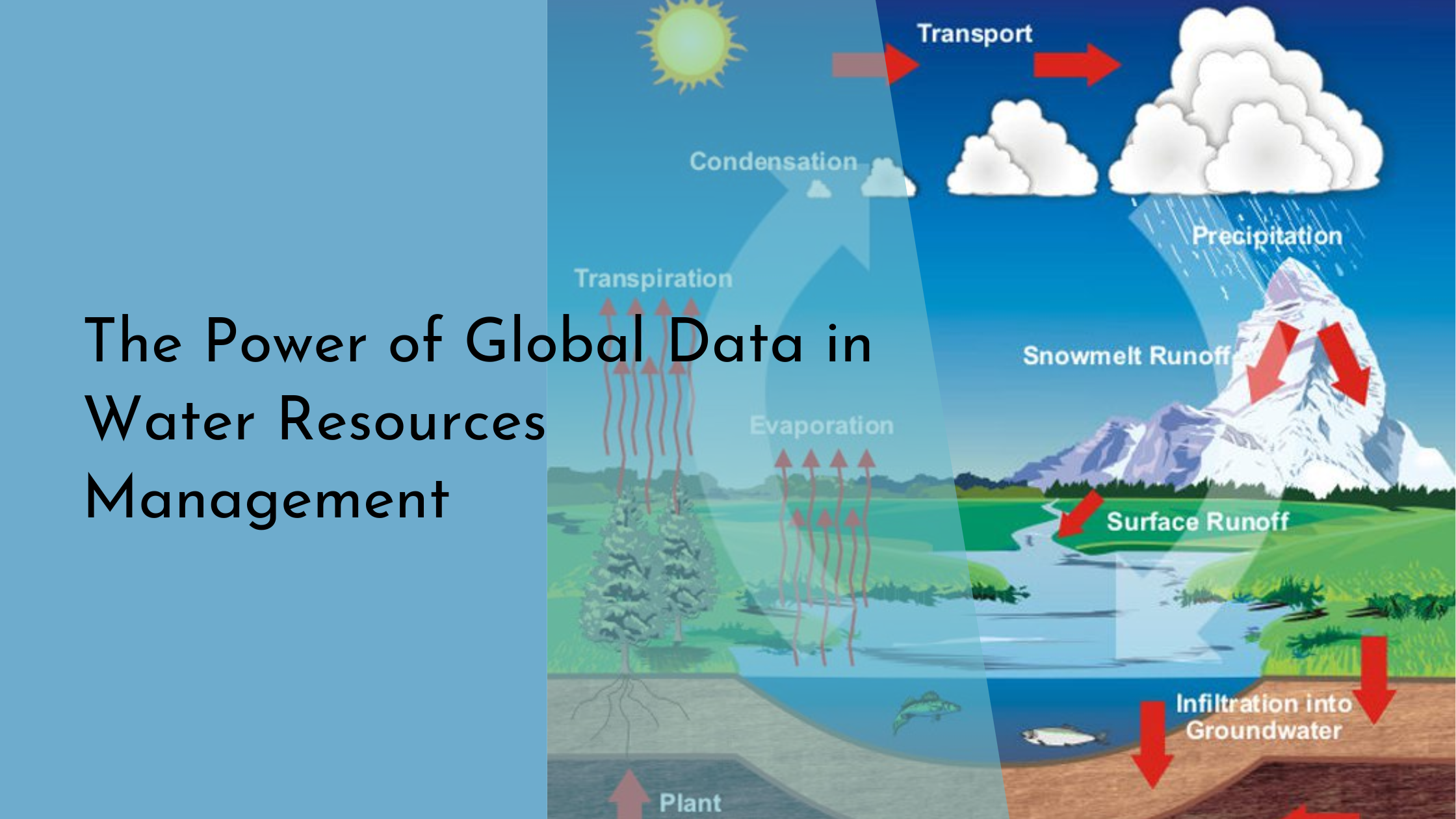The Power of Global Data in Water Resources Management
Water is the essence of life, covering 71% of the Earth’s surface and playing a crucial role in sustaining ecosystems, economies, and communities. As the world’s population grows and climate change intensifies, managing water resources effectively becomes imperative. In this era of digital transformation, the power of global data is revolutionizing water resources management, offering innovative solutions to age-old challenges. This article explores how global data is reshaping the landscape of water management, from ground-breaking data collection technologies to inspiring success stories and future opportunities for global collaboration.
Understanding Global Data in Water Management
Global data in water management refers to the collection and analysis of extensive datasets from diverse sources, such as satellite imagery, sensors, weather predictions, and historical records, to make informed decisions about the distribution, conservation, and utilization of water resources. The integration of these datasets provides a comprehensive view of water systems worldwide, enabling more accurate assessments of water availability, quality, and demand. By leveraging global data, stakeholders in water management can identify patterns and trends, predict future scenarios, and devise strategies that promote sustainable use.
The synergy between global data and water management is particularly vital in addressing issues like droughts, floods, and water scarcity. For instance, access to real-time data on rainfall patterns and river flows helps in crafting timely responses to flood risks. Likewise, data on groundwater levels can guide irrigation practices, ensuring efficient water use in agriculture. As a result, global data serves as a cornerstone for sustainable water management practices, empowering governments, organizations, and communities to make data-driven decisions that mitigate water-related challenges.
Innovative Technologies in Data Collection
The advent of innovative technologies has transformed the field of data collection, making it easier and more efficient to gather critical information about water resources. Remote sensing technology, which uses satellites and aerial imagery to monitor water bodies and weather patterns, stands out as a game-changer. These technologies provide invaluable data on the dynamics of water systems, such as surface water distribution, evaporation rates, and vegetation health, offering fresh insights into the complexities of water management.
Moreover, the Internet of Things (IoT) has introduced smart water management systems that employ sensors and connected devices to monitor water quality and usage in real time. These systems can detect leaks, measure water consumption, and track pollution levels, facilitating prompt interventions and optimizing resource allocation. The combination of IoT with big data analytics further enhances the ability to analyze vast amounts of information, enabling stakeholders to identify inefficiencies, predict future needs, and adapt strategies accordingly. Through these technological advancements, data collection has become more precise, accessible, and impactful than ever before.
Real-Life Success Stories from Around the World
One of the most compelling success stories in water management through global data comes from Australia, where the Murray-Darling Basin Authority has harnessed data to optimize water allocation and preserve ecosystems. By integrating satellite data with on-ground measurements, the Authority has been able to monitor river flows, water extraction, and environmental impacts accurately. This data-driven approach has not only enhanced water security but also supported agricultural productivity and biodiversity conservation across the region.
Similarly, the city of Cape Town in South Africa offers an inspiring example of data-driven water management. Faced with a severe drought, the city implemented a comprehensive data analytics program to monitor water consumption and predict shortages. By using data to engage with citizens and enforce water-saving measures, Cape Town successfully averted “Day Zero” – the day when the city was projected to run out of water. These real-life cases underscore the transformative power of global data in addressing water challenges and fostering resilient communities.
Future Prospects and Collaborative Opportunities
The future of water resources management lies in the continued advancement and integration of global data technologies. Emerging technologies such as artificial intelligence and machine learning hold immense promise for enhancing predictive capabilities, allowing for more proactive water management strategies. By analyzing complex datasets, these technologies can uncover hidden patterns and provide actionable insights that help optimize water distribution and usage, ensuring sustainability for generations to come.
Collaboration is the cornerstone of unlocking the full potential of global data in water resources management. As data transcends geographical boundaries, international partnerships become essential in sharing knowledge, resources, and technologies. Organizations, governments, and communities must work together to create open data platforms, foster innovation, and address the global water crisis collectively. Such collaborative efforts will pave the way for a more water-secure world, where data-driven decision-making empowers all stakeholders to achieve a sustainable balance between water needs and availability.
The power of global data in water resources management is not just about technological advancement; it’s about transforming how we perceive and interact with our planet’s most precious resource. By harnessing the potential of data, we can address water challenges more effectively, promote sustainable practices, and build resilient societies capable of thriving in the face of climate change. As we look to the future, embracing data-driven approaches and fostering global collaboration will be key to unlocking the full potential of water resources and ensuring the well-being of both people and the environment. Together, we can make a meaningful impact on the world, one drop at a time.


